Rare Antique K&G Luneville-Badonviller demi-porcelaine teapot (France - 1920s)
Rare Antique K&G Luneville-Badonviller demi-porcelaine teapot (France - 1920s)
Couldn't load pickup availability
Share
K&G Luneville-Badonviller creamy white demi-porcelain tea/coffee pot, produced in France in the town of Luneville, situated in the Grand Est région (Lorraine) very close to the Austrian border. With a history dating back to 1723, Luneville is one of the most famous French pottery manufacturers, the company being actually at one time a Royal supplier for Marie-Antoinette’s Trianon.
With a French countryside vibe, this teapot was produced during the 1920s, most likely at the beginning of a new production era as of 1923 - 1929, the teapot is adorned with charmingly little pink roses and blue flowers, it has some lovely gold details finish on the outside edges and a quintessentially Art Deco circle patterned lid with an even more Art Deco inspired sun rays like lines on the bottom half.
This pot is a remnant of past days when both Europe and US saw a major increase in tea rooms popularity, happening simultaneously with the growing sense of women’s independence. Bear in mind that during WWI many females took over male dominated jobs and that once the war was over, they were basically returned to their initial status, however that could not have been possible anymore. And so it happens that during the 1920s this whole “tea room craze” was going on, as both an expression of the need and demand for such venues, but also as a means of female self-expression.
Even though most tea rooms were to be found in England and the US, there was also a secondary scene in France with the rise of the ‘salons de thé’, very popular amongst the upper middle class.
During that period, Orange Pekoe tea was extremely popular, ‘Pekoe’ referring to the British grading system (rather than the colour or flavour of the tea), whilst ‘Orange’ is a direct reference to the Royal House of Orange, the Dutch being one of the first countries to import tea in the 1600s. In the context of the tea room frenzy, the 1920s also saw the use of tea bags (instead of loose leaves).
So, regardless if you want to use the teapot for actually serving tea or just to decorate your shelf or use it as a flower vase, this piece can certainly tell a lot of stories. It’s in great condition, with minor signs of use and a patina given by its age (now 100 years, meaning that it’s an antique piece).
Product specifications
Country of manufacture — France
Condition — Good — This vintage/antique piece is in near original condition. It shows traces of use on the bottom, as reflected in the pictures.
Restoration and Damage Details — Patina consistent with age and use.
Material — Demi-porcelain
Size — Ø 19 cm x 21 cm L x 12 cm l
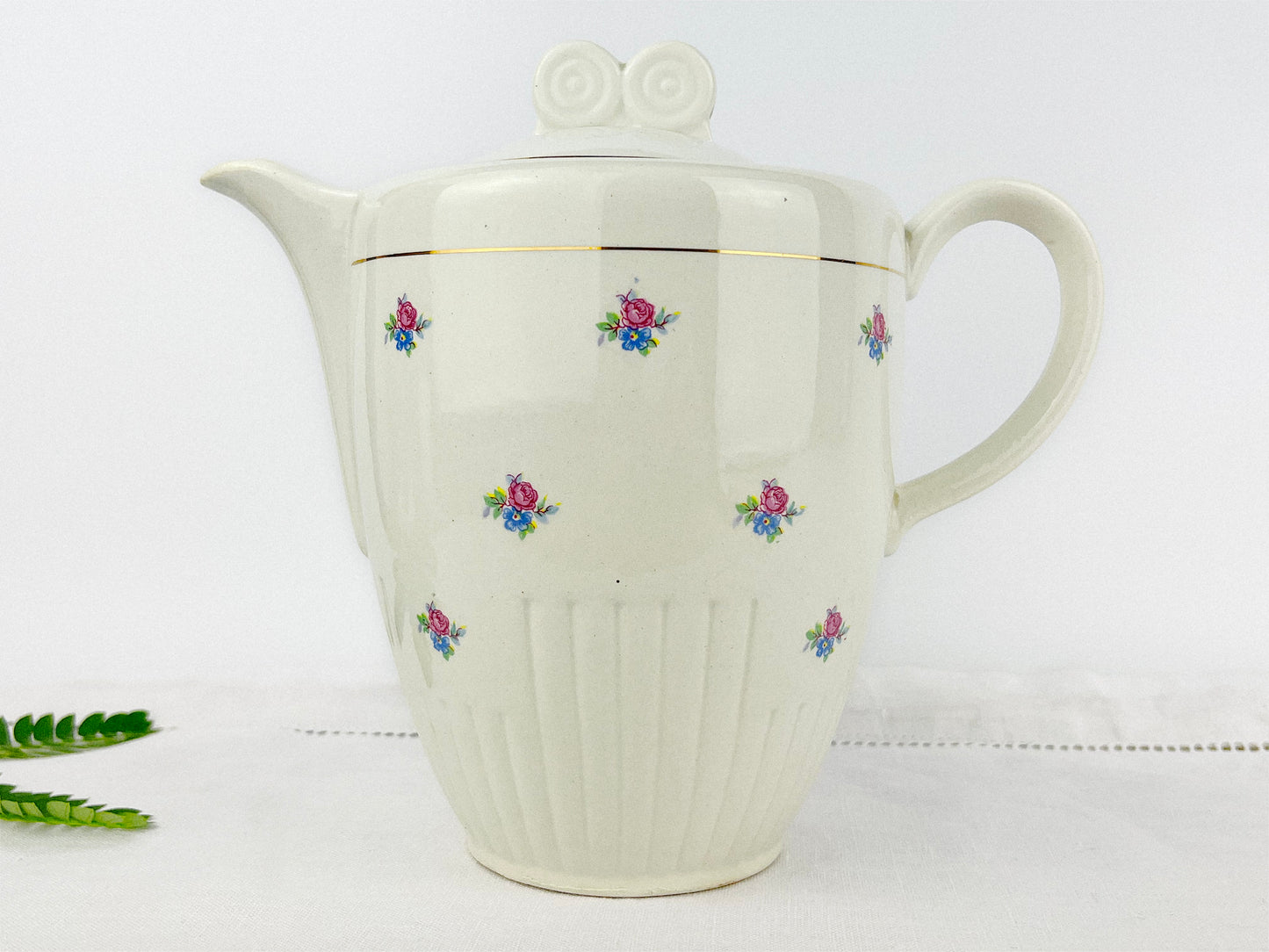
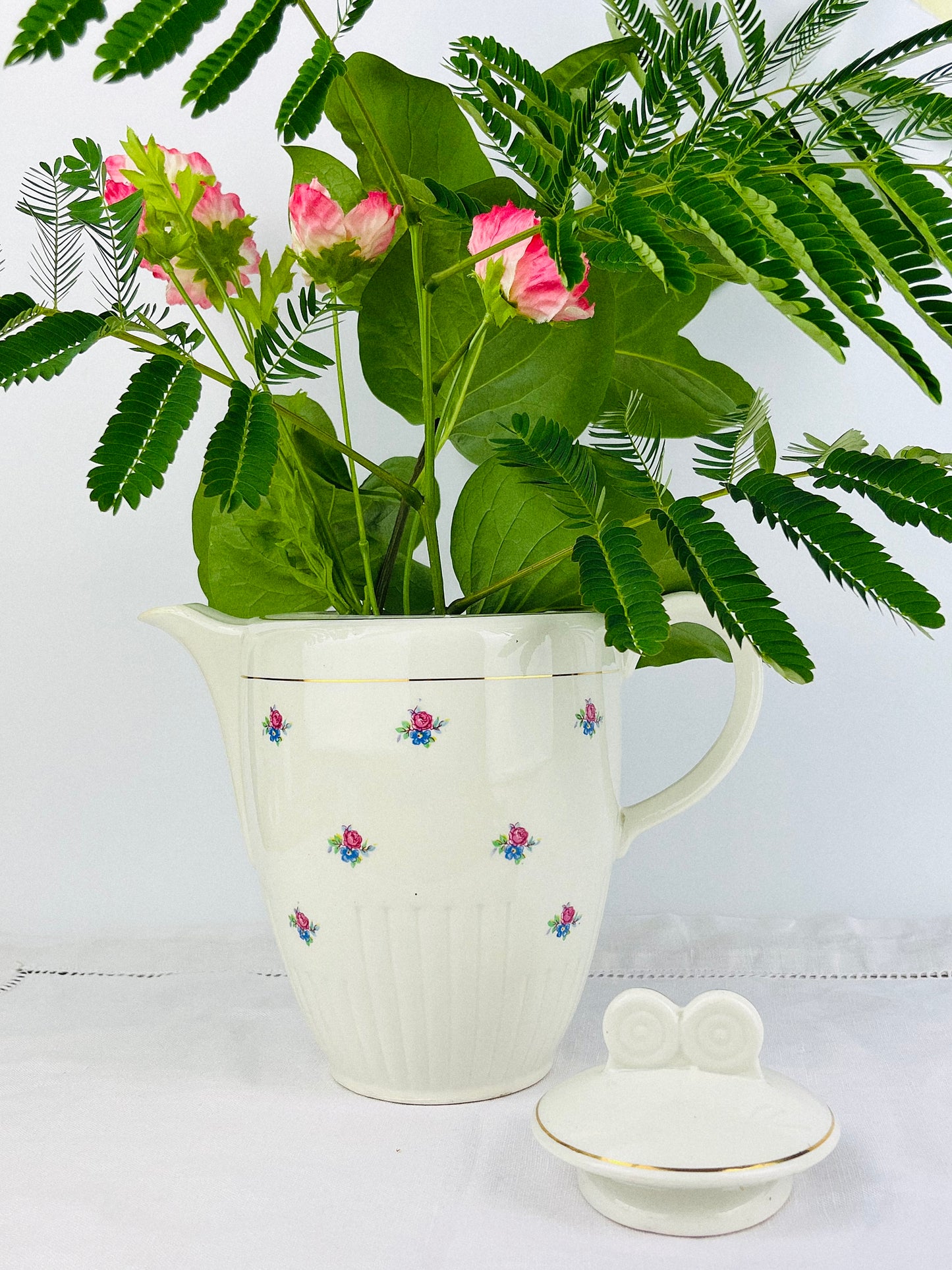
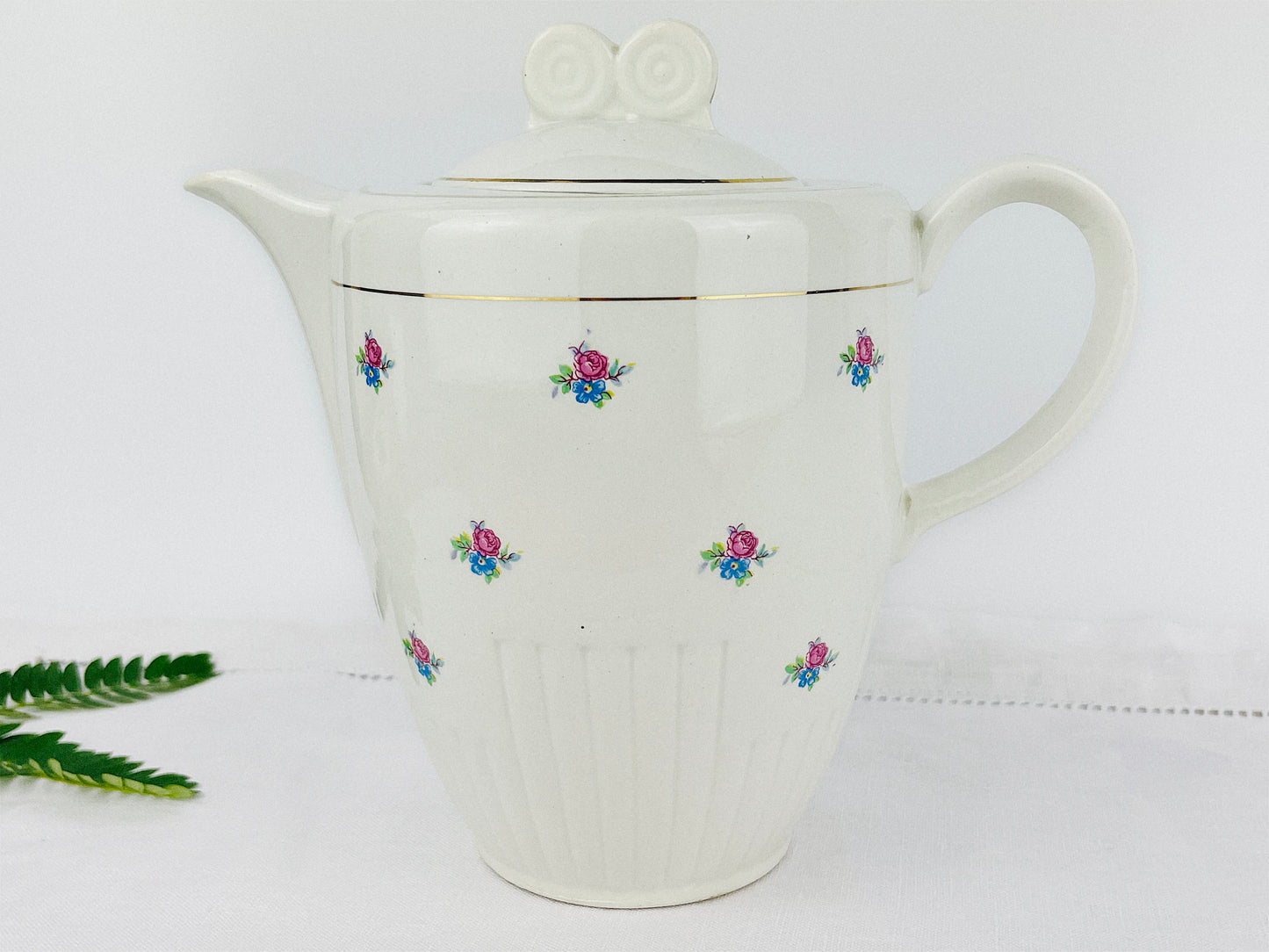
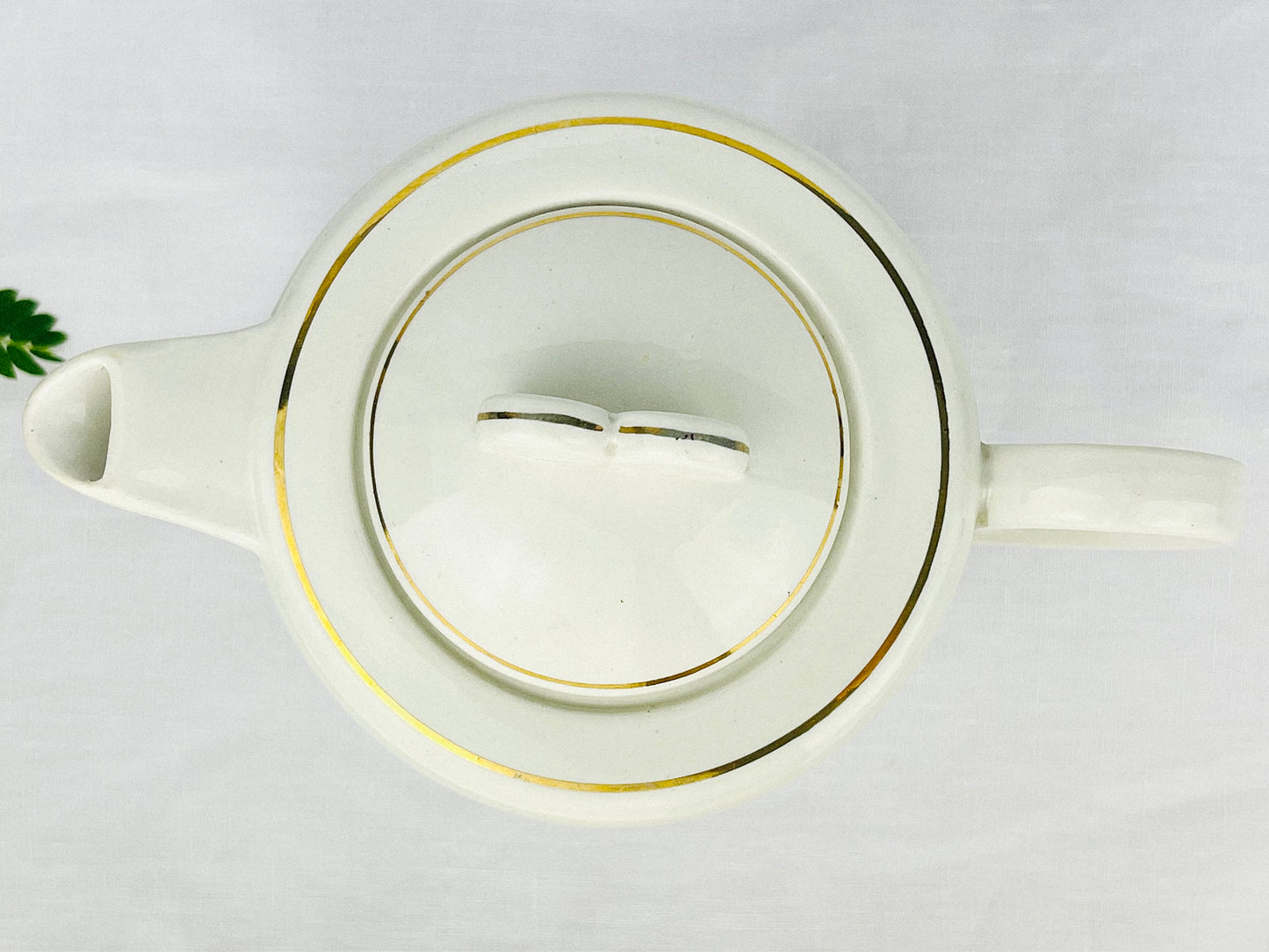
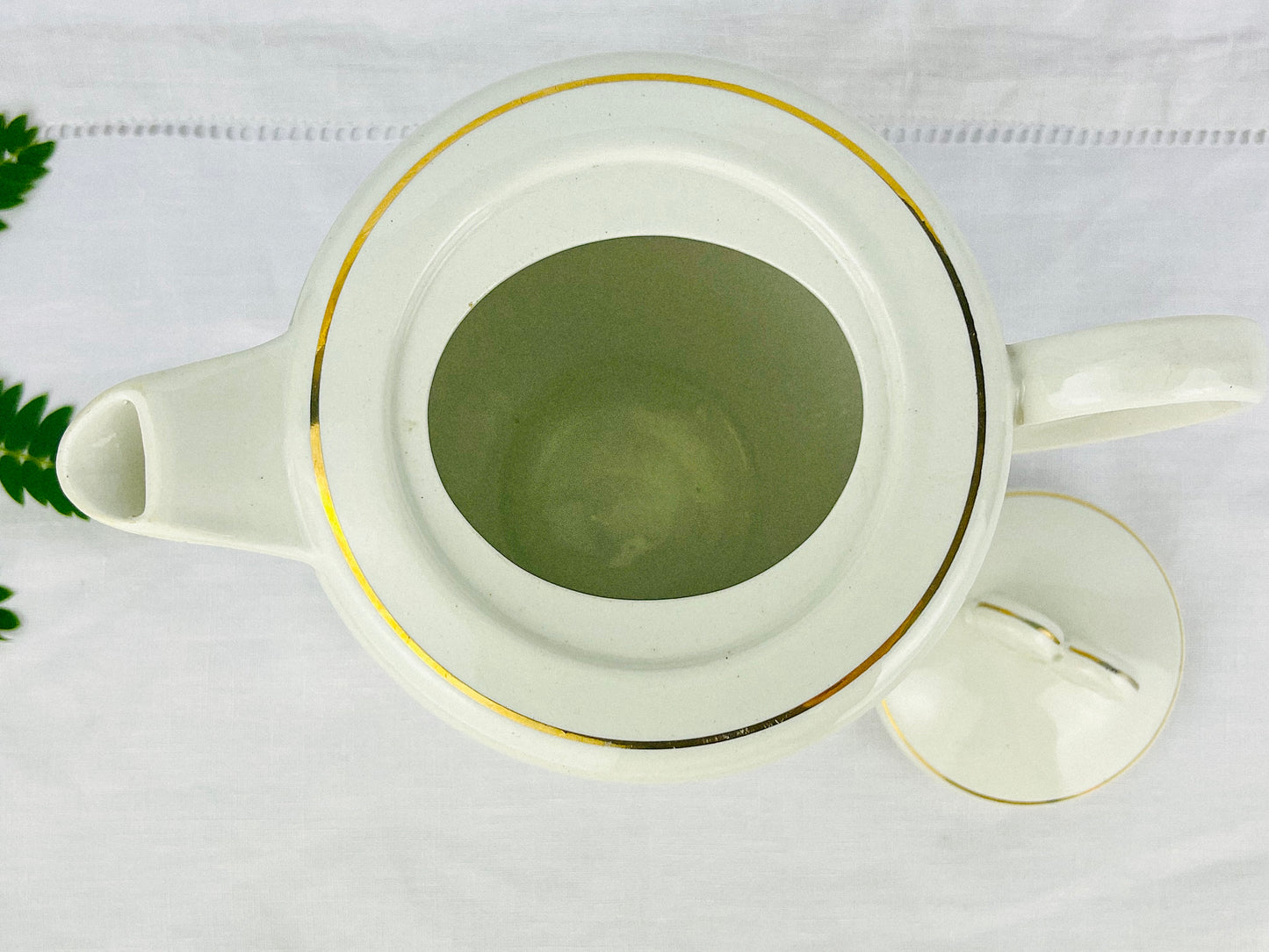
![OBOL [beyond vintage]](http://obol.ro/cdn/shop/files/obol_140_x_70_mm_50_x_20_mm.png?v=1736338530&width=600)




